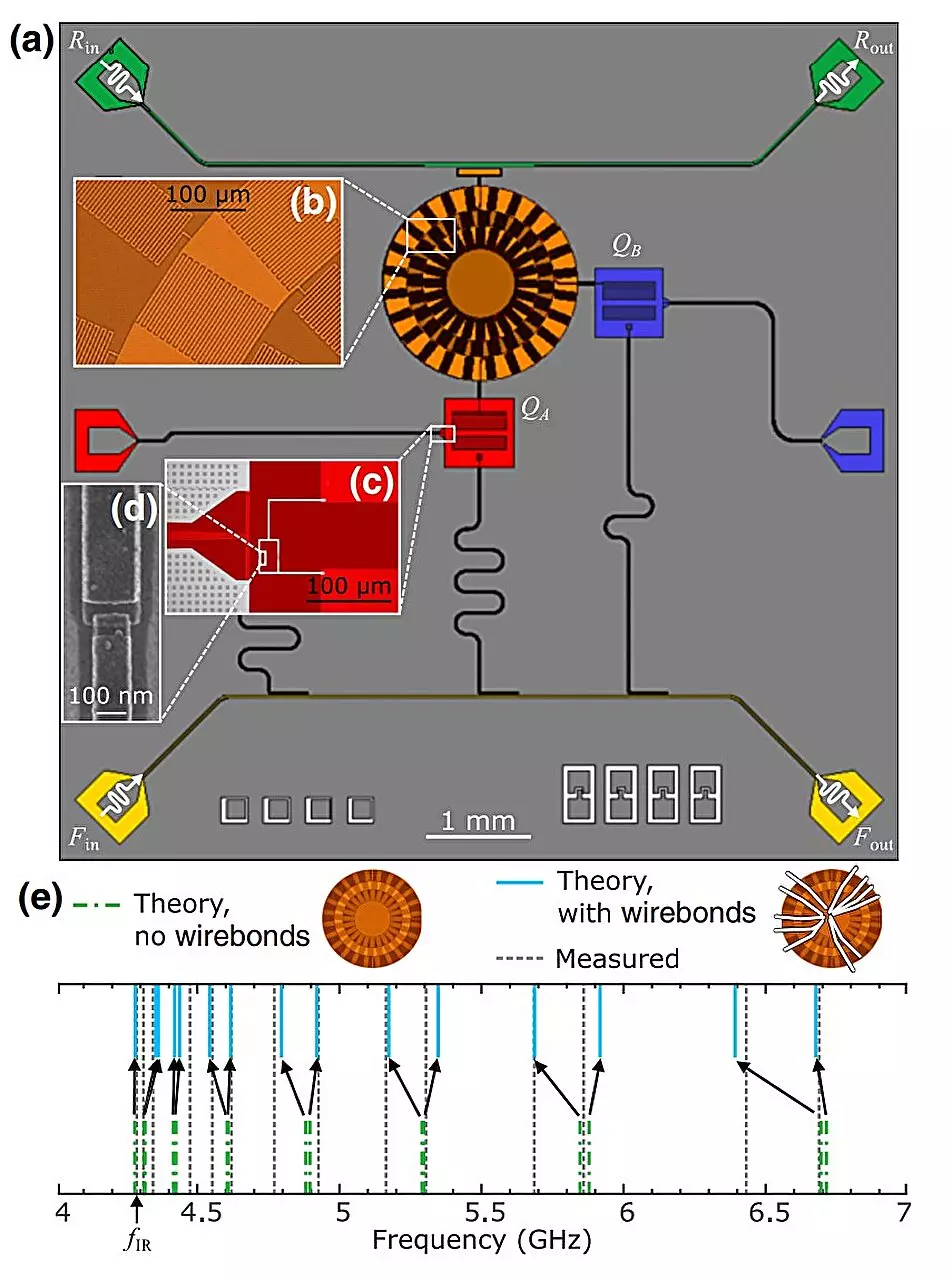Quantum computing stands at the precipice of revolutionizing technology, offering potential advancements across various sectors including cryptography, drug discovery, and complex systems simulation. However, the path to a fully functional quantum computer—a machine capable of outperforming classical computers in diverse tasks—faces significant obstacles, particularly in the realm of fault tolerance. Achieving fault tolerance in quantum processors is notably challenging due to the inherent fragility of qubits and the complex relationships required for entanglement. Without a reliable means to couple qubits effectively, scaling quantum processors from experimental setups to practical, vast arrays becomes a formidable task.
Traditional coupling methods often restrict the connectivity of qubits to nearest neighbors. While this paradigm facilitates simpler designs, it inherently limits the overall robustness and efficiency of quantum circuits. As the number of qubits increases, the required interconnections lead to an exponential growth in the number of couplers. For example, connecting just one hundred qubits may demand hundreds of couplers, necessitating complex fabrication techniques that may not remain manageable as systems expand toward the millions of qubits planned for future developments.
Limits of Conventional Approaches
Conventional coupling mechanisms, while useful, come with significant limitations. The messy tangle of cables required to control thousands of individual qubits makes the task of managing these systems logistically infeasible. This situation poses a serious challenge for researchers who aim to create systems capable of handling vast quantities of qubits while maintaining low error rates. The bulkiness of wires required for individual control only adds to the complexity, often resulting in designs that are impractical for room-sized labs, let alone in widespread applications.
Thus, the quest for alternatives that embrace scalability and efficiency becomes imperative. Innovators in the field are tasked with redefining how qubits are interconnected to ensure that future quantum computers can transcend the limitations imposed by existing technologies. Ideas that incorporate innovative designs and multi-modal approaches are essential for overcoming current representational and operational barriers.
Revolutionary Innovations in Coupling Techniques
A breakthrough surfaced from a collaboration between theoretical physicist Mohd Ansari and experimentalist Britton Plourde, revealing a multifaceted potential for quantum coupling. Their innovative design utilizes a multimode coupler shaped in a ring fashion, leveraging a metamaterial transmission line that provides a broad spectrum of standing-wave resonances. This unique architecture significantly enhances the connectivity between qubits, allowing for a tunable coupling strength that can adjust dynamically based on the pair of qubits in question.
What sets their design apart is its unconventional approach to frequency and wavelength behavior. In contrast to traditional physics principles, which dictate that doubling a frequency halves its wavelength, the new ring resonator behaves in a manner reminiscent of a musical instrument capable of producing longer wavelengths as pitch increases. This results in an intricate and adaptable coupling of qubits that could revolutionize how qubits communicate and interact with one another.
Implications for Quantum Entanglement and Fault Tolerance
The capability to couple multiple qubits with variable interaction strengths presents promising ramifications for the field of quantum computing. Through this method, researchers are not merely creating a network of entangled qubits; they are constructing a dynamic framework where entanglement can be controlled and manipulated with unprecedented finesse. The introduction of transverse exchange interactions, which vary according to qubit detuning, opens pathways for engineers and physicists to fine-tune entanglement energy scales.
Furthermore, the potential for higher-order interactions, which can shift signs based on the state of the qubits, enables an even deeper layer of control within the quantum framework. The implications for fault tolerance are profound; systems designed with the flexibility to manage error correction will vastly improve the reliability and performance of quantum circuits, fostering a new age of effective quantum computations.
Believing in a landscape where qubits are adaptable, connected, and resilient steadily edges society closer to realizing the full promise of quantum mechanics—a world where the computational capacity knows no bounds. This exciting momentum in quantum technology highlights not only the ingenuity of modern physicists but also an optimistic outlook for humanity’s future interaction with technology. With continued innovation, the horizon for quantum computing is indeed radiant.

